In this article I cover:
-
What baby/child and parent gains from reading
-
Summary of psychological research and links between reading and skill development (e.g. literacy, language, communication)
-
Tips and ideas to get the most out reading with baby
-
Reading with baby – including visual aspects and development, high contrast flash cards (free download) how to engage baby in books
-
Reading with Toddlers
-
Books without words – for older children (post toddlers)
Reading books to baby from an early age might not quite make sense, I mean they can’t read, concentrate for too long or even see very well can they? But – it is highly encouraged and has many benefits. There is even research looking at reading to babies in the neonatal intensive care unit, and the positive impact on parent-infant interaction, helping parents feel closer to their baby, increased sense of control and intimacy. It also promoted later reading with the baby (1).
At nearly 5 months, the Little Lovely mainly likes to try and taste the book and get the corners of board books in his mouth. We have a few cloth books also that just get chewed upon. But he also appears to look and listen to the story.
For a summary on reading with ages 0-3 months, 3-6m and 6-12m see this page here: Reading with baby: what, why and how to
About reading:
♦ Baby will recognise mother’s voice from the womb (5) .
♦ Reading may therefore reassure baby of the parent’s presence when read to at a young age (1).
♦ Hearing your voice will also engage and stimulate.
What else do you get out of reading with baby? Quite a lot actually. Reading:
-
Is bonding (parent-child interaction, sense of comfort and security)
-
Involves learning about your child; their choices, responses and reactions
-
Fun (add different voices, actions, ask questions, etc)
-
Increases communication
-
Simulates your child’s imagination
-
Involves visual development
-
Memory aspects
(especially if you’re repeatedly reading the same book or their favourite book – the child will come to know what to expect/anticipate at certain parts of the book – repetition can be good)
-
Instrumental in the development of reading skills
-
Supports emerging literacy and later language skills
-
For example, this study (2) set out to investigate at what age shared reading begins to impact on later literacy skills. Shared book reading with infants at 8 months was found to relate to language abilities later on when the child was 12 and 16 months old, particularly with girls, and with expressive language (being able to put thoughts into words and sentences).
-
Reading with younger infants who were 4 months old though was not found to significantly relate to later expressive language.
-
This doesn’t mean it is not important or beneficial to read with infants under 8 months – don’t forget about the other benefits mentioned in this list of reading with younger babies, plus this is only one study . The study also concludes that “more research is needed to clarify what parents say and do when reading to pre-verbal infants” – so we don’t know enough about what parents do and how they do it when reading to younger babies and how this might effect the development of language skills.
-
And, reading with 4 month olds was found to be related to shared book reading when they were 8 months old, indicating the development of a good reading habit and pattern of behaviour that started from early in the child’s life.
-
-
Reading for pleasure in childhood benefits vocabulary later in life
I’ve posted more about a research study that found this here, but in summary:
Regular readers tended to have higher vocabulary scores at age 10 and 16, and regular childhood readers scored higher on a vocabulary test as adults, aged 42.
This might indicate that regular childhood readers are likely to have picked up ‘good reading habits’ which continued into adulthood.
-
For more about reading and babies, see this article on psychology today on “Are Commercial-Product Claims that Babies Can Read Overblown?”.
-
Here’s some interesting quotes from the article:
– Six-month-old babies are good at recognition.
– Babies crave novel stimuli.
– Eight-month-old babies can auditorily recognize specific words read from a story book for up to two weeks.
– Five-month-old babies can remember visual stimuli up to two weeks.
Get the most out of reading:
-
Read with expression
Sometimes we put more expression in our voices when reading than we would when having a conversation – baby therefore hears more of this when reading to them than they might just from listening to every day chatting.
don’t forget about facial expression and mirroring baby’s expression also – babies are fascinated by faces.
-
Interactive reading is important
This study (3) writes that Interaction is “the key” to language development during reading, not just the child hearing the the sounds of words being read from the page. The research found that babies made more speech like sounds during reading than two other activities (puppet and toy play). And, mothers were more responsive to these sounds during reading than the other activities; their responses were often imitations or an extension of the sound, e.g. if baby said “ba”, mother might say “ba-ba-ba”, or “ball”.
-
Describe and name the pictures, describe what is happening
Children’s books don’t always have that much text, but make the most out of the pictures. what’s going on? what are the colours? is there something relevant to your life and baby such as there is a cat in the story and maybe you have a cat too. What sound does the cat make? What colour is he? And so on.
-
You don’t have to use children’s books – read to baby from whatever you are reading.
I was trying to have some mummy time the other day in a coffee shop with LL asleep in pram. He wakes up just as I was enjoying the paper and my soya decaf sugar free vanilla syrup extra hot latte. So I read him what I was reading in the paper and tried to have a conversation around it by asking him what he made of various aspects of the story. He just looked at me though…. I’ll take it that he was carefully considering the questions and constructing a detailed answer.
-
Get creative
Make your own books, books without words, flash cards, visual stimulation cards, pictures of faces (for younger babies especially)
I bought some black and white (high contrast) flash cards off of ebay (see picture below) but could have made these with use of a laminator, probably easier said than done with a 2 month old baby to look after however. Yeah a few quid spent at ebay probably a bit easier at the time.
-
Make links between what you read and what baby does later in the day – e.g. if the story was about baby’s day, brushing your teeth, a happy cat or whatever, talk about it if later if you see a cat.
-
Use a variety of books
-
look for baby’s verbal and non-verbal responses to help with your “conversation” about the the book/story (2)
Reading with baby:
Visual aspects and development
The visual system is not fully developed at birth (4), and sight develops gradually. Baby has difficulty distinguishing between similar colours such as orange and red and so prefers high contrast colours such as black and white.
I therefore subjected the poor LL to some high contrast “flash cards” and images from an early age (← pictured left)! I’m not sure how much interest he took in them, but the red image was in his Moses basket along with a black and white image that I now can’t find. It’s a post card I bought at a local book shop when LL was a few weeks old. I also brought them out when changing him to distract him. The cards on the bottom row were from Ebay and not very expensive.
The images on the top left are nice sturdy, double sided flash cards on thick board threaded onto a plastic hoop. You can take each image off the hoop and share it with baby. LL was mainly interested in trying to put the board in his mouth. Here is LL on the right a little bit older (8 months) and able to hold and investigate the cards better. You could probably easily make these cards, find strong images in magazines, cut out, laminate or glue onto cardboard or postcards. They were not very easy to have a conversation around but I’m sure you could come up with something or point out the contrasting colours, images, shapes etc.
Some stimulation cards are available free to download online, like these ones, but please note I haven’t looked through all these myself – take a look or search for more that might take your fancy. Here are some more available to download
-
For more info on the infant visual system see my blog post entry here that talks briefly about depth perception and what babies like to look at (they have a preference for looking at faces.
-
For information on sight and visual development by age see this article from the Baby Center website.
-
If you are interested in reading more about babies and colour preference, see this blog entry that discusses some of the research briefly. It writes that Infants may prefer blues and purples.
Engaging baby in the book
Setting up a good reading habit and familiarization with books and reading materials can start off at a very young age (note the research above that showed that reading at 4 months was related to the baby reading at 8 months, which is turn was related to language abilities at 12 and 16 months).
But how can you physically do this? I came across this neat little idea (picture below) from a pediatric Occupational Therapist (candokiddo.com) to help babies “turn pages and look at a board book more independently”.
She writes:
Wrap rubber bands around the spine of your book to separate a few of the pages. This will keep them from sticking together and help your little one to turn them long before she can separate them.
Be sure to take the rubber bands off after each reading time so that they don’t damage the spine of the book.
Caution – rubber bands can snap and be swallowed….closely supervise your baby for safety (eyes on baby within arm’s reach).
There are also a range of book mediums to engage baby in book including cloth books, books with textures like the sticking out textured animal tails book (pictured left), and peek a boo/lift the flap books. These are also sensory and encourage curiosity and investigation.
Reading with Toddlers:
Here’s a nice post from The Educators Spin On It, about how to select, limit and display books for toddlers. They suggest that:
Less Books = More Reading
They also write that when selecting books:
-
Chose books with a range of textures, colours, moving parts (we have quite a few “peek a boo” and lift the flap books, for example)
-
Take your exisiting books into consideration when buying new – e.g. you might not want 5 books about a cat called Billy, unless your child is cat mad, that is
-
Build a diverse bookshelf with range of topics
When displaying and limiting books:
-
Remove books that are not enjoyed or read – I take a bag of kid’s stuff to charity every now and again – then buy more from charity to replace!
-
ROTATE books – just like you might do with toys. Put part of the book collection away and swap them every so often to keep the books fresh and engaging (unless your child likes reading Mog every night for 6 months)
-
Display books in an engaging and accessible way, maybe showing each book front on so your toddler can choose easily, and store at toddler height
Books without words
And lastly, at least for now, a bit about books without words. How does that work and what are the benefits of “reading” books without words? These are more than picture books or basic baby books that have random colours and pictures on each page – they tell a story. With an older child, you both get to be creative, flesh out the story and develop the narrative together. It encourages curiosity, creativity, gets you both asking questions and having conversations. With a younger child you may be doing most of the talking but previous benefits still apply. An example is this almost wordless Aesop’s Fable, the Lion and the Mouse.
-
For more about wordless picture books and how to use them: see this page, some more tips here, and even more tips about telling a story with wordless books.
-
Want to read more? Here is a page about “top 10 wordless picture books”
Further Links
0-3, 3-6 and 6-12 months discussed
-
Talk to you baby: language development – information and support for practitioners on language development from 0 to 3, from Words For Life, National Literacy Trust
-
Words For Life website – from birth to 11 years old – tips and information on talking to your baby, reading, play, songs, rhymes and more
-
Words for Life recommended reads from baby to 3 years old
The moral of the story is to enjoy reading with baby/child and the other developmental stuff will be thrown in as a bonus outcome.
References:
-
Lariviere & Rennick (2011). Parent picture-book reading to infants in the neonatal intensive care unit as an intervention supporting parent-infant interaction and later book reading. Journal of Developmental & Behavioral Pediatrics, 32 (2), pp 146-152.
-
Karras, J. & Braungart-Rieker, J. (2005). Effects of shared parent-infant book reading on early language acquisition. Applied Developmental Psychology, 26, 133-148.
-
Julie Gros-Louis, Meredith J. West, Andrew P. King. The Influence of Interactive Context on Prelinguistic Vocalizations and Maternal Responses. Language Learning and Development, 2016;
-
Brémond-Gignac D., Copin H., Lapillonne A., Milazzo S. (2011). Visual development in infants: physiological and pathological mechanisms. Curr. Opin. Ophthalmol. 22, S1–S8.
-
Decasper AJ, Fifer WP. Of human bonding: newborns prefer their mothers’ voice. Science. 1980;208:1174 –1176.
Other references influencing this page:
-
High P, Lagasse L, Becker S, Algren L, Gardner A. Literacy promotion in primary care pediatrics: can we make a difference? Pediatrics. 2000;105:927–934.
- Sullivan and Brown, 2014. Vocabulary from adolescence to middle-age, Centre for Longitudinal Studies, Working Paper 2014/7

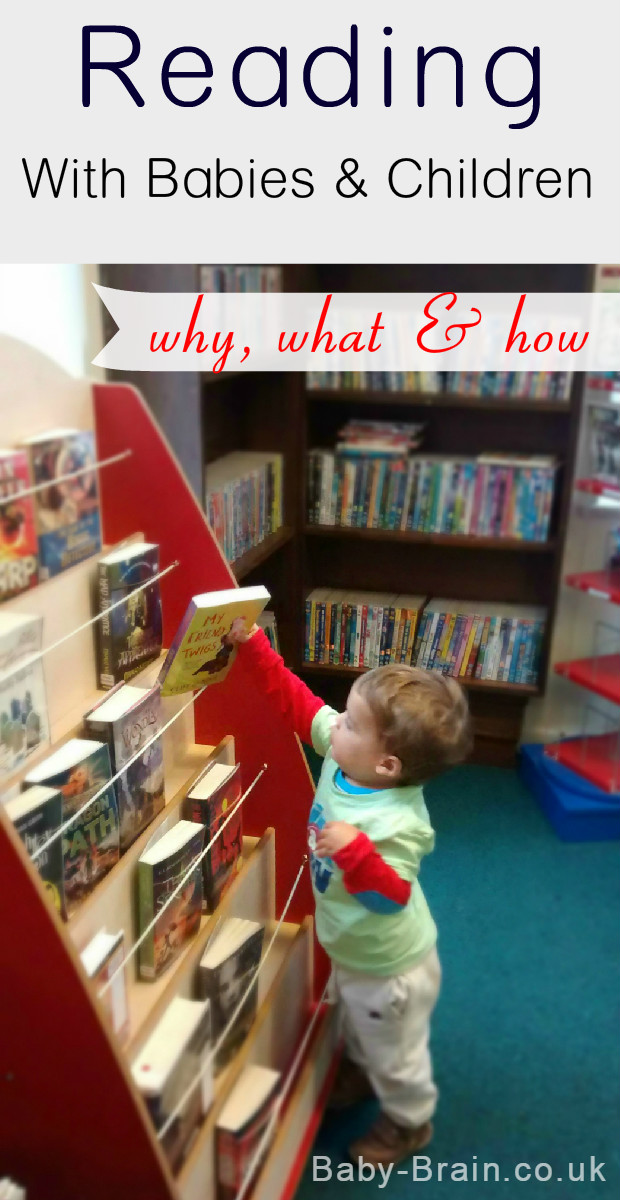
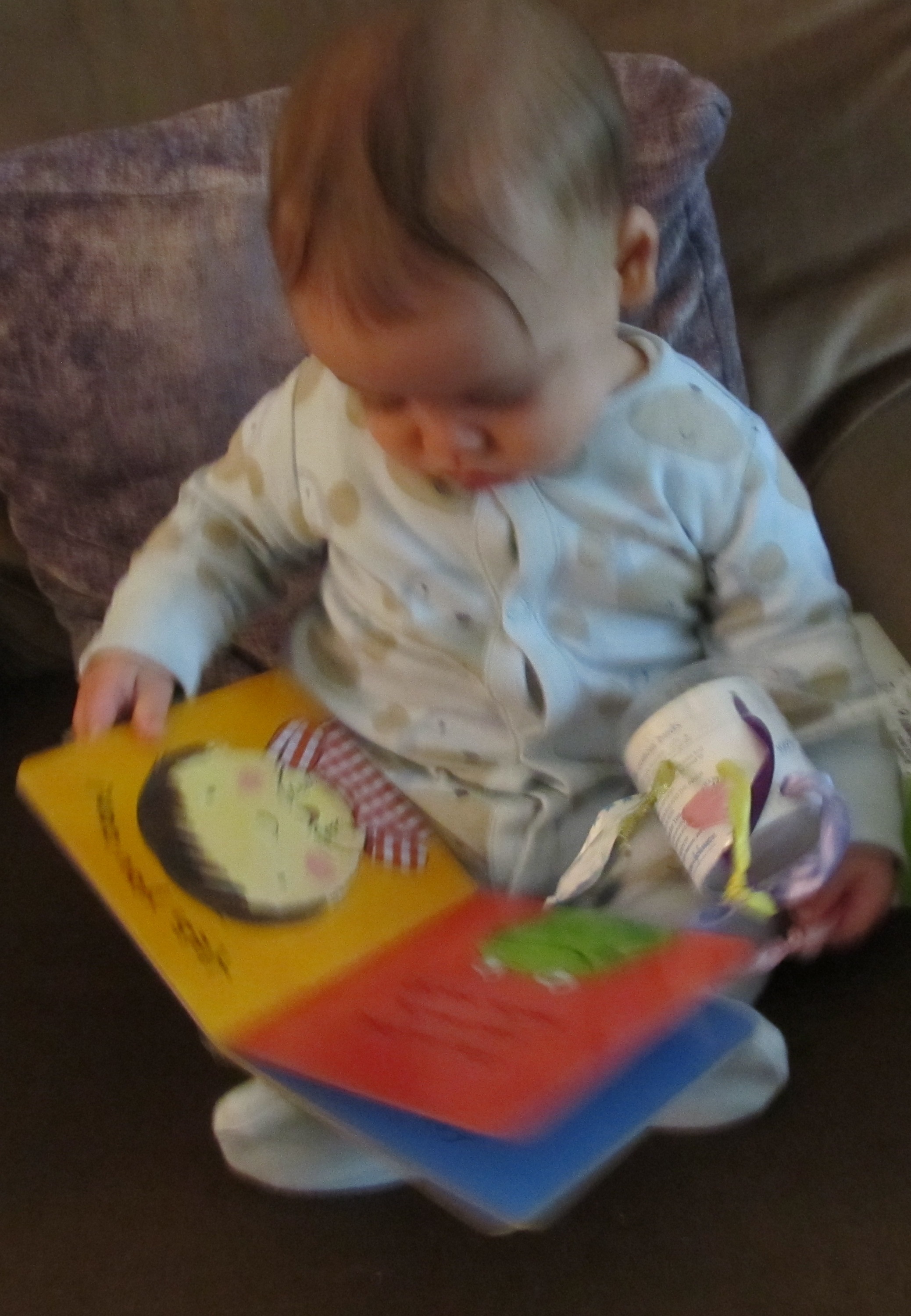
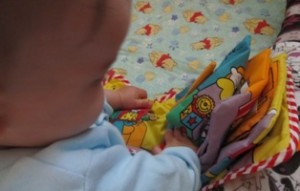

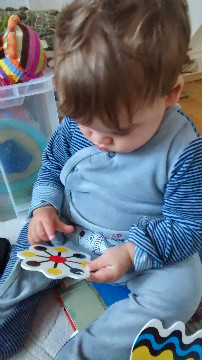
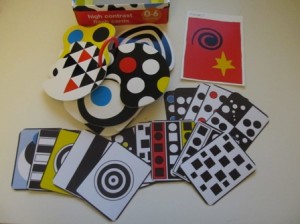
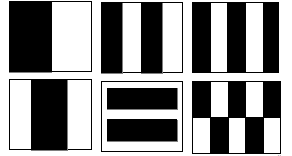


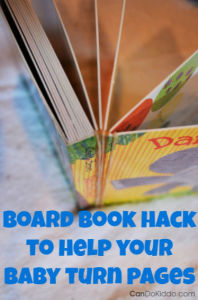

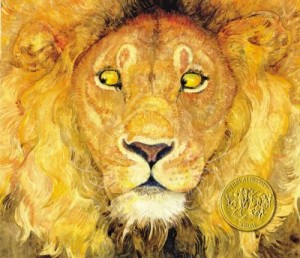
Pingback: Preparing the toddler for a new baby | Baby Brain
Pingback: How to play with a newborn baby (0-3 months) – what and why – psychology and research | Baby Brain
Pingback: Developments and progress at 1 year old – baby’s 1st birthday | Baby Brain